 Facebook
Facebook
 X
X
 Instagram
Instagram
 TikTok
TikTok
 Youtube
Youtube
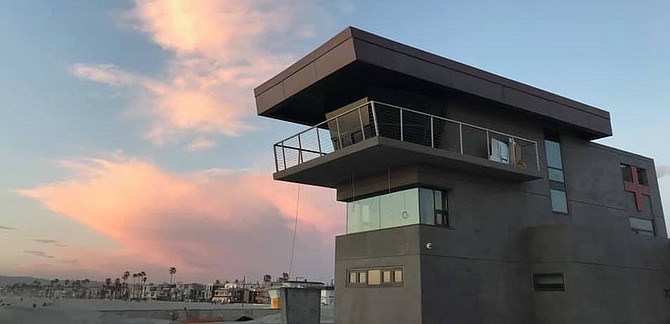
On May 9, the old wooden South Mission Beach Lifeguard Station was demolished.
“It didn’t take too much effort to bring it to the ground,” Dana Vanos said.
The circa 1974 temporary installment was located slightly north of the Mission Bay Channel jetty.
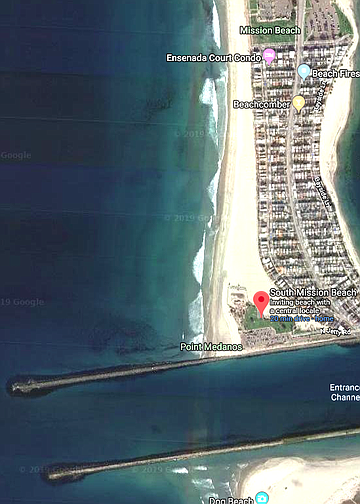
On May 16, I talked to Vanos, president of the San Diego Lifesaving Association — and manager of the lifeguardsofsandiego Instagram page, which provides San Diego County surf-beach-and-weather conditions, local rescue efforts, waterman intel, and San Diego County lifeguard photos, bios and history.
“We approximated that South Mission makes about 500-700 water rescues annually depending on the year, weather, conditions, etc."
Craig was a seasonal lifeguard for the City of San Diego back in the early 1990s. “I’ve seen rescues from that [old] tower,” he said, "the demolishing has been a long time coming.”
Vanos recalls the old brown tower setup: “The interior or the station was built with a downstairs section including a locker room area with a desk, fridge, washer dryer, and cupboard storage behind a curtain that separated it from the medical aid room section in a 15 ft. by 15 ft. area. Stairs around the exterior of the station lead to the top floor room which consisted of the observation room, small kitchen, bathroom, shower, and small locker area.”
The new three-story station sits about 100 yards north from the old one; the project’s planning, design and construction budget was over $4.9 million
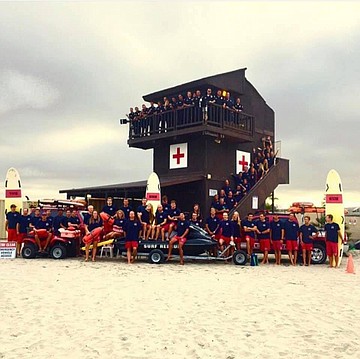
When construction in the new tower began in 2015, some neighbors spoke to the NBC 7 San Diego. “Why is it necessary?” asked Charles Boyd. “They have a lifeguard station down there now that they say is useless, but it could be refurbished for maybe $100,000.”
“The new tower is better than the old one because it will have a proper-sized first aid area as well as a larger area for equipment storage,” Craig responded.
The new observation room sits at about the same height as the old one.
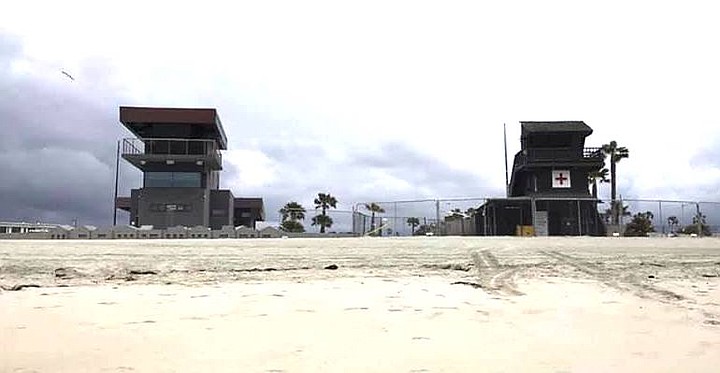
“[It] has a larger visual scope with the design of the windows. The guards are able to see well into the channel with a better visual of the south channel jetty,” Vanos explained, “and have a better vantage to the north
“The new tower has binoculars on a pivoting arm (similar to those used in the dentist office) that can stay stationary after put into a specific position.”
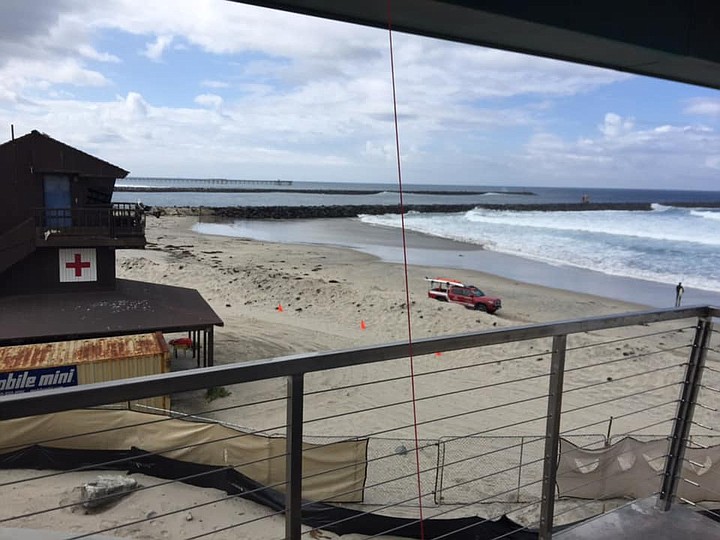
The new station has a lunch room on the second floor with windows that look west; this allows guards to maintain a visual of the water while taking a break. The jurisdiction of the South Mission lifeguards starts at the Mission Bay Channel and runs north to San Fernando Place, south of the Mission Beach parking lot. The lifeguards can respond into the channel and at the jetty if need be.
“In the city of San Diego we operate with a ‘tower 0’ concept based around redundant water coverage,” Vanos continued. “This means there is always one person sitting in the observation tower (which is always at the top of the main stations) during operational hours who oversees all the small number towers.
"The smaller number towers are our satellite stations and are staggered with their opening and closing times depending on crowds, conditions and location.... When a guard from the small number towers goes out for a warning, they notify the observation tower over the radio, that person acknowledges, and their water is visually covered by the person in the main observation station and the neighboring satellite towers.”


On May 9, the old wooden South Mission Beach Lifeguard Station was demolished.
“It didn’t take too much effort to bring it to the ground,” Dana Vanos said.
The circa 1974 temporary installment was located slightly north of the Mission Bay Channel jetty.

On May 16, I talked to Vanos, president of the San Diego Lifesaving Association — and manager of the lifeguardsofsandiego Instagram page, which provides San Diego County surf-beach-and-weather conditions, local rescue efforts, waterman intel, and San Diego County lifeguard photos, bios and history.
“We approximated that South Mission makes about 500-700 water rescues annually depending on the year, weather, conditions, etc."
Craig was a seasonal lifeguard for the City of San Diego back in the early 1990s. “I’ve seen rescues from that [old] tower,” he said, "the demolishing has been a long time coming.”
Vanos recalls the old brown tower setup: “The interior or the station was built with a downstairs section including a locker room area with a desk, fridge, washer dryer, and cupboard storage behind a curtain that separated it from the medical aid room section in a 15 ft. by 15 ft. area. Stairs around the exterior of the station lead to the top floor room which consisted of the observation room, small kitchen, bathroom, shower, and small locker area.”
The new three-story station sits about 100 yards north from the old one; the project’s planning, design and construction budget was over $4.9 million

When construction in the new tower began in 2015, some neighbors spoke to the NBC 7 San Diego. “Why is it necessary?” asked Charles Boyd. “They have a lifeguard station down there now that they say is useless, but it could be refurbished for maybe $100,000.”
“The new tower is better than the old one because it will have a proper-sized first aid area as well as a larger area for equipment storage,” Craig responded.
The new observation room sits at about the same height as the old one.

“[It] has a larger visual scope with the design of the windows. The guards are able to see well into the channel with a better visual of the south channel jetty,” Vanos explained, “and have a better vantage to the north
“The new tower has binoculars on a pivoting arm (similar to those used in the dentist office) that can stay stationary after put into a specific position.”

The new station has a lunch room on the second floor with windows that look west; this allows guards to maintain a visual of the water while taking a break. The jurisdiction of the South Mission lifeguards starts at the Mission Bay Channel and runs north to San Fernando Place, south of the Mission Beach parking lot. The lifeguards can respond into the channel and at the jetty if need be.
“In the city of San Diego we operate with a ‘tower 0’ concept based around redundant water coverage,” Vanos continued. “This means there is always one person sitting in the observation tower (which is always at the top of the main stations) during operational hours who oversees all the small number towers.
"The smaller number towers are our satellite stations and are staggered with their opening and closing times depending on crowds, conditions and location.... When a guard from the small number towers goes out for a warning, they notify the observation tower over the radio, that person acknowledges, and their water is visually covered by the person in the main observation station and the neighboring satellite towers.”
Comments